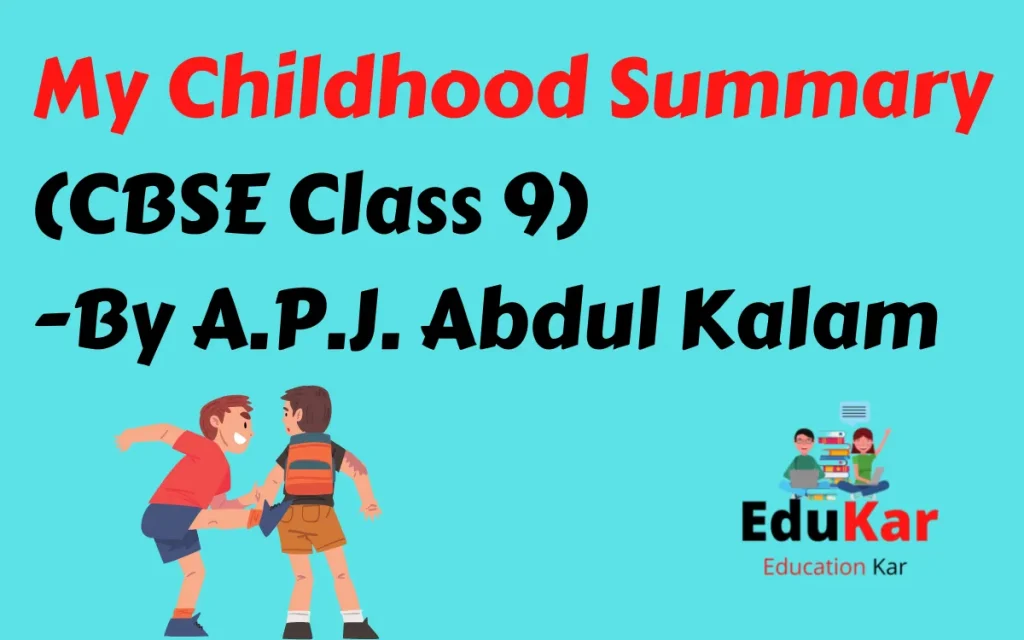
| Name | My Childhood |
| Type | Summary |
| Class | 9 |
| Board | CBSE Board |
| Author | A.P.J. Abdul Kalam |
Short Summary – My Childhood
APJ Abdul Kalam was born into a middle-class Muslim household. He had three brothers as well. Additionally, Kalam had a sister. His mum and father were also very kind people. Aside from that, Kalam grew up in an old house.
The father of APJ Abdul Kalam led a life that may be described as being quite straightforward. But his father provided for his kids with all they needed. In fact, neither of his parents had a college degree, nor were they wealthy. Furthermore, other guests regularly shared meals with the family. Due to his parents, Kalam also has the traits of honesty and self-control.
Kalam came from a religiously secular family. His family treated all religions with the same respect. Aside from that, his family took part in Hindu celebrations. Moreover , Kalam’s mother and grandmother told him stories about the Prophet and the Ramayana. Everything about this demonstrates how secular his family is.
Kalam’s childhood was influenced by friendship. He had three friends as well. They came from various religious backgrounds, too. Additionally, none of those friends displayed any signs of discrimination. All of these buddies, including Kalam, entered various occupations.
A new teacher joined Kalam’s fifth-grade class. Kalam had a cap on while in class. Indisputable evidence of Kalam’s Muslim identity came from this cap. Kalam also frequently sat next to Ramanandha, a Hindu priest’s son. The brand-new teacher was unable to put up with this. Kalam had to take a seat on the back bench as a result. Both of the buddies were devastated by what had happened and told their parents about it.
Meanwhile, Ramanandha’s father spoke with the teacher to ask him not to promote racial and social inequality. He demanded that the apology be given immediately. Additionally, the teacher must resign in the event of a rejection. As a result, the teacher’s character was transformed, and he issued an apology.
Abdul was once invited to eat dinner at the home of a science teacher. The wife of this science instructor, however, declined to work for Kalam because she supported religious segregation. As a result, the science teacher decided to give Kalam some food. Additionally, the instructor sat down to eat lunch next to Kalam. Behind the door, the science teacher’s wife was seeing all that was happening. The second offer for lunch the next weekend was offered to Kalam by the science teacher. The wife served herself this time, but she did it from the kitchen.
After the Second World War, Kalam was given permission to continue his education at Ramanathapuram, putting an end to his upbringing. There is no doubt that his parents adored him. But their devotion didn’t mean they had to prescribe what Kalam should do.
About The Author
The biography of A.P.J. Abdul Kalam is called “Wings of Fire,” and the chapter headed “My Childhood” discusses Abdul Kalam’s youth. He was both India’s President and a brilliant scientist. APJ discusses his family—his parents, siblings, and upbringing.
Conclusion
The class 9 English text, My Childhood, focuses on Kalam’s willpower and how his life transformed as a result of the various experiences he had as a child. In My Childhood by APJ Abdul Kalam, the bond between a mentor and a student is also expertly represented.







